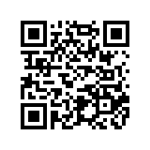期刊目錄列表 - 61卷(2016) - 【教育科學研究期刊】61(1)三月刊
 Directory
Directory
圓形複合圖形面積解題學習軌道之教學實驗研究
作者:陳嘉皇(國立臺中教育大學數學教育學系)、吳碧智(臺中市力行國民小學)
卷期:61卷第1期
日期:2016年3月
頁碼:1-41
DOI:10.6209/JORIES.2016.61(1).01
摘要:
本研究利用學習軌道設計圓形複合圖形面積課程進行教學實驗,檢視學生學習情形及解題表現,瞭解學生在各教學環節產生的迷思概念及困難,教師透過教學省思檢討自身教學及思索如何進行有效教學,幫助學生建立完整及系統性的圓形概念,順利解題。研究樣本為臺灣中部地區某公立小學一班六年級學生及其導師。課程內容以現行九年一貫課程綱要─六年級數學科的圓形複合圖形面積概念為主,參考數學任務及教學指引自行設計。蒐集和分析的資料包含:一、師生課室互動;二、學生數學學習單之表現;三、課後訪談紀錄。以學生作答內容統計答題正確率驗證教學效果,並以質性方式分析學生錯誤及迷思概念。研究發現:一、依據學習軌道設計圓形複合圖形面積任務,包含「認識圓形的基本組成要素」、「理解圓面積公式的由來」、「運用分割和移補的技巧來計算面積」、「理解分配律,學習用符號標記面積」和「『填補』和『其他策略』」;二、學業成就表現高、低分組的學生於「圓形複合圖形面積任務」的表現有所差異,其反應促使教師省思與修正調整學習軌道中任務的設計安排;三、經由教學實驗回溯省思後,教師對於學生概念的理解、教學方法及課程設計等方面的信念產生改變。
關鍵詞:面積、圓形、複合圖形、學習軌道
 《詳全文》
《詳全文》

參考文獻:
- 王建興(2003)。國小教師數學單元教學之探討-以圓周率教學為例(未出版碩士論文)。國立臺北師範學院,臺北市。【Wang, J.-X. (2003). The study of mathematics unit teaching in elementary-Example of π unit (Unpublished master’s thesis). National Taipei Teachers College, Taipei, Taiwan.】
- 沈佩芳(2002)。國小高年級學童的平面幾何圖形概念之探究(未出版碩士論文)。國立臺北師範學院,臺北市。【Shen, P.-F. (2002). Study on fifth & sixth graders’ understanding to two-dimensional geometry concepts (Unpublished master’s thesis). National Taipei Teachers College, Taipei, Taiwan.】
- 侯雪卿(2004)。國小高年級學生圓概念教學模組補救教學之個案研究(未出版碩士論文)。國立嘉義大學,嘉義市。【Hou, X.-Q. (2004). The case study of the remedial teaching module of the circle concept by elementary school students (Unpublished master’s thesis). National Chiayi University, Chiayi, Taiwan.】
- 教育部(2008)。國民中小學九年一貫課程綱要-數學學習領域。臺北市:作者。【Ministry of Education. (2008). National primary and secondary school syllabuses consistent-Nine areas of mathematics learning. Taipei, Taiwan: Author.】
- 陳嘉皇(2004)。國小學童面積概念轉化文本之設計及其教學效果之實驗研究(未出版博士論文)。國立高雄師範大學,高雄市。【Chen, C.-H. (2004). The study on the elementary students’ conception transfer of area learning text design and the effect inquion teaching experiment researchry (Unpublished doctoral dissertation). National Kaohsiung Normal University, Kaohsiung, Taiwan.】
» 展開更多
- 王建興(2003)。國小教師數學單元教學之探討-以圓周率教學為例(未出版碩士論文)。國立臺北師範學院,臺北市。【Wang, J.-X. (2003). The study of mathematics unit teaching in elementary-Example of π unit (Unpublished master’s thesis). National Taipei Teachers College, Taipei, Taiwan.】
- 沈佩芳(2002)。國小高年級學童的平面幾何圖形概念之探究(未出版碩士論文)。國立臺北師範學院,臺北市。【Shen, P.-F. (2002). Study on fifth & sixth graders’ understanding to two-dimensional geometry concepts (Unpublished master’s thesis). National Taipei Teachers College, Taipei, Taiwan.】
- 侯雪卿(2004)。國小高年級學生圓概念教學模組補救教學之個案研究(未出版碩士論文)。國立嘉義大學,嘉義市。【Hou, X.-Q. (2004). The case study of the remedial teaching module of the circle concept by elementary school students (Unpublished master’s thesis). National Chiayi University, Chiayi, Taiwan.】
- 教育部(2008)。國民中小學九年一貫課程綱要-數學學習領域。臺北市:作者。【Ministry of Education. (2008). National primary and secondary school syllabuses consistent-Nine areas of mathematics learning. Taipei, Taiwan: Author.】
- 陳嘉皇(2004)。國小學童面積概念轉化文本之設計及其教學效果之實驗研究(未出版博士論文)。國立高雄師範大學,高雄市。【Chen, C.-H. (2004). The study on the elementary students’ conception transfer of area learning text design and the effect inquion teaching experiment researchry (Unpublished doctoral dissertation). National Kaohsiung Normal University, Kaohsiung, Taiwan.】
- 陳嘉皇(2008)。國小面積資訊教材學習軌道設計與教學成效探討。高雄師大學報:自然科學與科技類,25,103-124。【Chen, C.-H. (2008). The study of the effects of learning trajectories designing and teaching experiment on elementary school students’ area formulation conception developed. Kaohsiung Normal University Journal: Sciences and Technology, 25, 103-124.】
- 陳嘉皇(2013)。國小六年級學生運用一般化基模進行圖形規律問題解題之研究。教育科學研究期刊,58(1),59-90。doi:10.3966/2073753X2013035801003【Chen, C.-H. (2013). Application of generalization schemas to solve figural pattern problems on sixth graders. Journal of Research in Education Sciences, 58(1), 59-90. doi:10.3966/2073753X2013035801003】
- 譚寧君(1994)。高年級面積教材的分析-國民新課程之精神。載於臺灣省國民學校教師研習會(編著),國民小學數學科新課程課程概說(高年級)(pp. 134-165)。臺北市:教育部。【Tan, N.-J. (1994). An area of high-grade materials analysis, national primary spirit of the new curriculum. In Taiwan National School Teacher Workshops Published (Ed.), National primary school mathematics new curriculum overview say (high grade) (pp. 134-165). Taipei, Taiwan: Ministry of Education.】
- Clements, D. H., & Battista, M. T. (2000). Designing effective software. In A. E. Kelly & R. A. Lesh (Eds.), Handbook of research design in mathematics and science education (pp. 761-776). Mahwah, NJ: Lawrence Erlbaum Associates.
- Clements, D. H., & Sarama, J. (2004). Learning trajectories in mathematics education. Mathematical Thinking and Learning, 6(2), 81-89. doi:10.1207/s15327833mtl0602_1
- Confrey, J., Nguyen, K., Lee, K., Panorkou, N., Corley, A., & Maloney, A. (2012). TurnOnCCMath. Retrieved from https://www.turnonccmath.net
- Corcoran, T., Mosher, F. A., & Rogat, A. (2009). Learning progressions in science: An evidence based approach to reform. New York, NY: Center on Continuous Instructional Improvement, Teachers College-Columbia University.
- Gravemeijer, K. P. E. (1999). How emergent models may foster the constitution of formal mathematics. Mathematical Thinking and Learning, 1(2), 155-177. doi:10.1207/s15327833mtl0102_4
- Nguyen, K. H. (2010). Investigating the role of equipartitioning and creating internal units in the construction of a learning trajectory for length and area (Unpublished doctoral dissertation). North Carolina State University, Raleigh, NC.
- Simon, M. A. (1995). Reconstructing mathematics pedagogy from a constructivist perspective. Journal for Research in Mathematics Education, 26(2), 114-145. doi:10.2307/749205
- Stein, M. K., Grover, B. W., & Henningsen, M. (1996). Building student capacity for mathematical thinking and reasoning: An analysis of mathematical tasks used in reform classrooms. American Educational Research Journal, 33(2), 455-488. doi:10.3102/00028312033002455
| 中文APA引文格式 | 陳嘉皇、吳碧智(2016)。圓形複合圖形面積解題學習軌道之教學實驗研究。教育科學研究期刊,61(1),1-41。doi:10.6209/JORIES.2016.61(1).01
|
|---|
| APA Format | Chen, C.-H., & Wu, B.-T. (2016). Teaching Students How to Calculate the Area of Complex Figures With Circles by Using Learning Trajectories. Journal of Research in Education Sciences, 61(1), 1-41. doi:10.6209/JORIES.2016.61(1).01
|
|---|
Journal directory listing - Volume 61 (2016) - Journal of Research in Education Sciences【61(1)】March
 Directory
Directory
Teaching Students How to Calculate the Area of Complex Figures With Circles by Using Learning Trajectories
Author: Chia-Huang Chen(Department of Mathematics Education, National Taichung University of Education), Bi-Tsz Wu(Taichung Municipal Li Sing Elementary School)
Vol.&No.:Vol. 61, No. 1
Date:March 2016
Pages:1-41
DOI:10.6209/JORIES.2016.61(1).01
Abstract:
A mathematics course teaching students how to calculate the area of complex figures with circles was designed using learning trajectories. We conducted a teaching experiment to examine the learning conditions and problem-solving performance of students and understand their misconceptions and difficulties in different areas of learning. Teacher journals review teaching techniques and effective teaching methods to assist students in forming complete and systematic concepts of circles and in solving problems. The subjects in this study comprised a sixth-grade class of students at a public elementary school in Central Taiwan and their homeroom teacher. The course content focused on the concepts of determining the area of complex figures with circles, as introduced in sixth-grade mathematics in the Grade 1-9 Curriculum Guidelines. We referred to math teaching materials and guidelines to design the course. The collected and analyzed data included: (1) teacher-student interactions during class, (2) the math worksheet performance of students, and (3) after-class interview records. We verified teaching effectiveness by using the worksheet scores and qualitatively analyzed the misconceptions of students. The findings of this study indicate the following: (1) the teaching materials designed using learning trajectories include the Basic Composing Elements of Circles, Understanding the Circle Area Formula, Cutting and Shifting Techniques to Calculate Area, Understanding the Distributive Law and Marking Areas with Symbols, and Filling in and Other Strategies, (2) students with different levels of cognition displayed varying performance on the area worksheets, and (3) after retrospective reflections on the teaching experiment, the teacher’s behavior changed with regard to understanding the conceptions of the students, teaching methods, and curricular design.
Keywords:area, circle, complex figure, learning trajectories